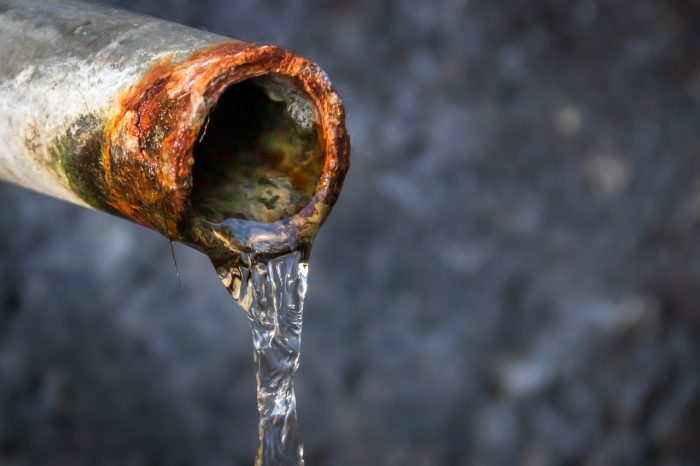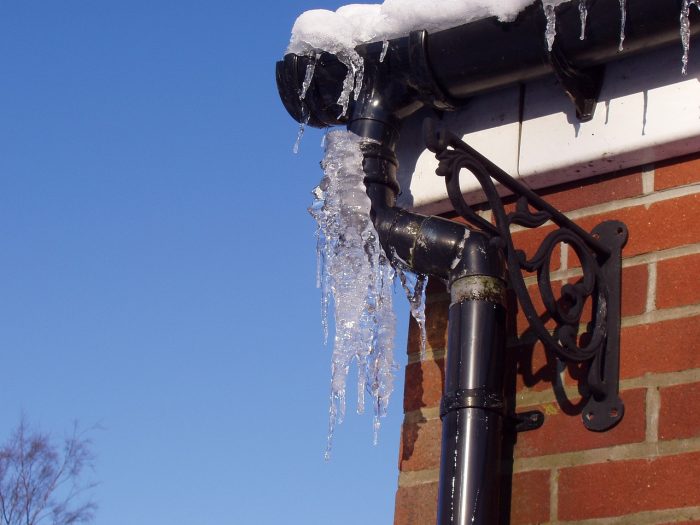
While snow-covered landscapes and warm inside fires are winter’s best features, the season also offers serious dangers to homes, especially in the plumbing department. In the winter, frozen pipes are one of the most typical and dangerous problems that homeowners confront. Extensive water damage and expensive repairs can result from pipe breaches caused by frozen water expanding. If you care about your home’s structural integrity and want a trouble-free winter, you must take measures to avoid frozen pipes.
Will frozen pipes thaw on their own?
Freezing pipes can thaw themselves, but it can be dangerous and time-consuming. Some important considerations are as follows:
- Possibility of bursting
When the ice inside the pipe melts, there may be a pressure buildup between the blockage and the tap. When the ice melts, the pressure will be so great that the pipe will burst, letting water damage occur.
- Preventative Measures:
Insulating exposed pipes, leaving taps dripping in very cold weather, and keeping cabinet doors open will help prevent pipes from freezing in the future.
- Proactive Thawing
It’s best to use safe procedures like these when thawing frozen pipes.
- To thaw the pipe’s surrounding area, you can use a portable heater.
- Wrapping the pipe with towels saturated with hot water.
- Use a space heater, heating pad, or hair dryer to apply heat to the pipe.
- Temperature Changes
If the weather gets warmer, freezing pipes could start to defrost on their own. The length of time this takes, though, is directly proportional to how severe the freeze is.
To avoid any possible damage, it is best that you contact a professional plumber if you are unsure or if the pipe is not thawing properly.
At what temperature will pipes freeze?
When the temperature dips below 32 °F, pipes usually start to freeze. Nevertheless, factors such as pipe insulation, pipe placement, and the length of time exposed to below-zero temperatures can influence the precise freezing point. For instance:
- Flowing Water
Dripping or moving water has a lower likelihood of freezing than static water.
- Indoor vs. Outdoor Pipes
There is a higher risk of pipe freezing in cold, unconditioned places like basements, garages, or outside walls.
- Insulated Pipes
Insulated pipes can endure lower temperatures for an extended period of time.
Insulating pipes and maintaining a slow trickle of water are effective preventative measures to take in harsh weather.
How to avoid frozen pipes in the winter
Insulation
Winter pipe insulation is one of the best ways to prevent freezing. Here’s a detailed guide:
- Figure out which pipes need insulation
- Remember to take into account any pipes that are exposed to the weather or run along outside walls.
- Keep pipes in cold places, like outside walls, crawl spaces, attics, garages, and basements, in mind.
2) Select the appropriate insulation material
- It supplements the protection of other insulations when used together with them.
- Using a vapor barrier wrap is necessary, yet it is suitable for very cold climates.
- High-temperature pipes benefit from their increased flexibility.
- Various sizes are available to accommodate different pipe diameters, and they are easy to install.
- Take insulation measurements and cut the required amounts
- Scissors or utility knives can help cut the insulation material to the required lengths.
- Use a tape measure to find out how long the pipes need insulation.
- Install the insulation
- Insulating the Foam
Use duct tape, wire, or cable ties to fasten the insulation.
To open the pre-slit foam tube, trace the seam.
The seam should be tightly sealed before placing it over the pipe.
- Rubber Insulation
Rubber insulation is more flexible than foam, so use the same procedures as with foam, but make sure it fits snugly.
- Fiberglass Insulation
Using fiberglass insulation, wrap the pipe, making sure to slightly overlap the edges.
- Fasten with duct tape or wire
If there isn’t already a vapor barrier covering it, put one on.
- Apply a sealant to all seams and joints
- To prevent heat loss, insulate exposed pipe ends with foam covers or insulation caps.
- Insulate any exposed areas that may be vulnerable to cold air by taping any gaps, joints, or seams.
- Make sure the insulation is secure and look for any gaps
- To make sure the insulation fits snugly, re-secure it as needed.
- Locate any spots where the insulation has moved or may be seen through holes.
- Insulate faucets and pipe connections
- To keep outside spigots safe, cover them with foam or wrap them in insulation.
- Wrap insulation over all valves and pipe connections.
- Extra precautions in very cold weather
- Insulated pipe sleeves made for high temperatures are an extra layer of defense.
- Wrapping pipes with heating tape before adding insulation is a good idea in really cold locations.
By adequately insulating your pipes, you can greatly reduce the likelihood of them freezing and bursting in the winter. Insulation needs to be checked for wear and tear on a regular basis and replaced as needed to guarantee continued protection.

Sealing cracks and openings
It is practical to seal openings and cracks to prevent pipes from freezing in the winter. This is the way it can be done:
Look for cracks and openings
In particular, you should inspect the areas surrounding your house that have exposed pipes to cold air, such as the basement, the attic, and the crawl space.
To seal, use insulating foam or caulk
If there are any openings or cracks around your vents, windows, pipes, or doors, fill them up with expanding insulating foam or caulk. This aids in keeping chilly air away from the pipes.
Weatherstripping doors and windows
For added protection against cold air drafts, weatherstripping should be used around windows and doors.
Pipe insulation
Use heat tape or foam insulation sleeves to cover any exposed pipes. Pay close attention to the pipes located in colder places, such as crawl spaces, attics, and basements.
Keep cabinets open
If you have pipes under your sink, you can open the doors to the cabinets and let warm air flow around them.
Maintain heating:
Make sure the area around your pipes doesn’t get below freezing by keeping the house heated, even while you’re not there.
Draining and disconnecting outdoor hoses
Make sure to unhook and drain garden hoses before winter arrives. To avoid frozen and possibly broken pipes, turn off outdoor water taps and remove any excess water.
If you follow these instructions, there is a much lower chance of frozen pipes in the winter.
Disconnecting and draining
Here are the steps to disconnect and drain outdoor pipes so they don’t freeze:
- Turn off the water supply
Find the outdoor pipe shutoff valve and turn it off. Typically, you’ll find this indoors, close to the point where your plumbing system connects to the outside pipes or taps.
- Open Outdoor Taps
If there is any standing water, you should open all of the outside taps. To help the water drain, you should also open any inside taps that are connected to the outdoor ones.
- Drain Sprinkler Systems and Hoses
Get the garden hoses disconnected and empty them thoroughly. The correct way to drain an underground sprinkler system is to refer to the instructions provided by the manufacturer. To remove any residual water, an air compressor could be needed.
- Insulate or Protect Pipes
Consider using heating tape or foam insulation sleeves to insulate pipes that are especially vulnerable to freezing.
- Close Outdoor Taps
After all the water has drained out of the outdoor faucets and pipes, be sure to securely close the taps to keep bugs and debris out.
- Monitor and Prepare for Cold Weather
After preparing your pipes, be prepared to repeat these steps if temperatures drop significantly again, so monitor weather forecasts closely.
Frozen pipes and other wintertime disasters are avoidable if you follow these procedures.
It’s crucial to monitor and maintain pipes during the winter months.
There are several reasons why winter pipe monitoring and maintenance are absolutely necessary:
Compliance and Safety
To avoid dangers like public safety concerns from burst pipes or water damage to property, it may be necessary to maintain pipes correctly during the winter in some areas.
By monitoring your pipes and performing regular maintenance throughout the winter, you can ensure the smooth and safe operation of your plumbing system. This will help to prevent the hassle and expense of fixing damaged or frozen pipes.
Avoiding Damage and Costly Repairs
Preventative maintenance and monitoring help to detect problems early. By addressing minor insulation issues, cracks, or leaks before they worsen, you can prevent costly repairs and restoration of water damage.
Making Sure There Is Always Water
If the pipes freeze, the water supply to your house or business could be cut off. In order to keep things comfortable and functional, monitoring is done to make sure that water flows freely and without interruption.
Maintaining Efficient Energy Use
Insulated and regularly maintained pipes improve energy efficiency. They keep water at a more pleasant temperature and reduce the amount of energy needed to maintain it, resulting in lower utility bills.
Protecting Plumbing Fixtures
All plumbing fixtures, especially outside faucets, must be drained or adequately insulated to avoid freezing. This is achievable only through careful monitoring. In this way, the pipes, as well as any related appliances and fixtures, are shielded from harm.
Emergency Preparedness
Despite all of the safety measures taken, pipes may still freeze. Knowing how to handle such circumstances can help to minimize damage. If you think a pipe may be frozen, turn on the water and gradually thaw it using a hairdryer or space heater. You should never use a torch or an open flame. Turn off the main water valve and call a plumber right away if a pipe bursts.
Conclusion
It takes both preparation and initiative to keep pipes from freezing in the winter. Households can lessen the severity of damage from burst and frozen pipes by being prepared for emergencies, sealing gaps, insulating pipes, and keeping indoor temperatures constant. By taking certain precautions now, you can avoid a lot of hassle, expense, and wasted time when winter finally arrives.
